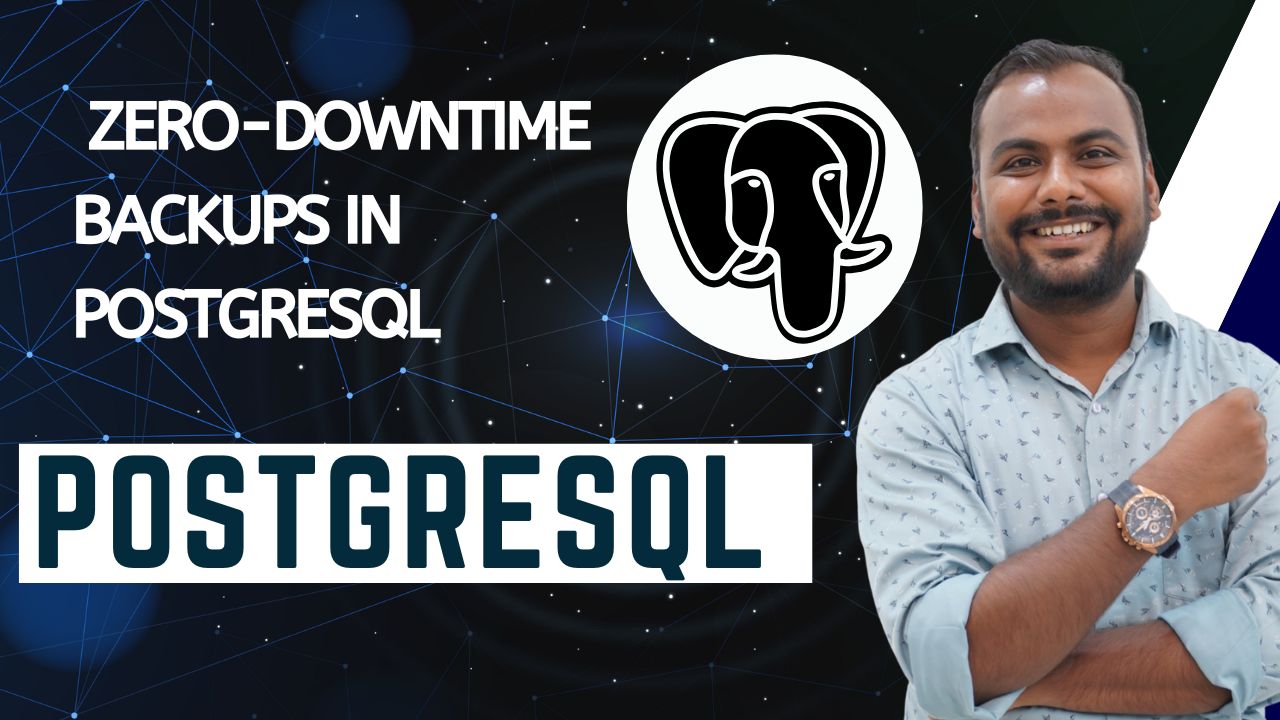How to Perform Zero-Downtime Backups in PostgreSQL
Introduction
In today’s data-driven environment, businesses can’t afford downtime — even during critical database operations like backups. For database administrators (DBAs), mastering zero-downtime backup strategies in PostgreSQL is essential to maintaining data availability and business continuity.
If you’re enrolled in PostgreSQL DBA online training or exploring PostgreSQL for DBA certification, understanding how PostgreSQL achieves high availability and consistent backups without service interruption is a vital skill.
1️⃣ Understanding Zero-Downtime Backups
A zero-downtime backup means creating a full or incremental backup of the database without stopping user access or impacting ongoing transactions. PostgreSQL supports this through hot backups and streaming replication mechanisms.
Unlike traditional methods that require locking tables or pausing writes, zero-downtime backups ensure seamless database operations — making them ideal for production environments.
Methods for Performing Zero-Downtime Backups
A. Continuous Archiving with WAL (Write-Ahead Logging)
PostgreSQL uses WAL files to record every database change. These logs can be archived continuously for backup or recovery purposes.
Steps:
-
Enable WAL archiving in
postgresql.conf: -
Perform a base backup using
pg_basebackup: -
Keep archiving WAL files while users continue to access the database.
-
Restore from base backup + WAL files when needed.
✅ Advantage: Continuous protection without stopping the database.
🎯 Best For: Learners in PostgreSQL for DBA courses practicing hot standby configurations.
B. Streaming Replication
Streaming replication allows one PostgreSQL server (the primary) to stream real-time changes to another (the standby) server. The standby server can serve as a read-only replica or backup target.
Steps:
-
Configure replication in
postgresql.conf: -
Create a replication user:
-
Initialize standby using:
-
Start standby server — it will sync continuously with the primary database.
✅ Advantage: Achieves zero downtime with instant failover capabilities.
⚙️ Ideal For: PostgreSQL DBAs managing production environments.
C. Logical Replication (Optional)
Introduced in PostgreSQL 10+, logical replication allows you to replicate individual tables or schemas. It’s a lightweight option for partial backups or data migrations.
Example:
✅ Advantage: Flexible, table-level replication for minimal downtime during migrations or upgrades.
Key Considerations for Zero-Downtime Backups
-
Network Bandwidth: Ensure sufficient bandwidth between primary and standby servers.
-
Disk Space: Plan storage for WAL archives and base backups.
-
Monitoring: Use tools like
pg_stat_replicationandpg_stat_archiverto track backup status. -
Automation: Schedule base backups using cron jobs or systemd timers.
Tip: In PostgreSQL DBA online training, you’ll learn to automate these tasks to ensure continuous data protection without manual intervention.
Restoring from Zero-Downtime Backups
When disaster strikes, restore your backup by combining the base backup and archived WAL logs.
Example:
Then start PostgreSQL in recovery mode — it will replay all archived transactions to restore the database to the desired point in time.
Conclusion
Performing zero-downtime backups in PostgreSQL ensures that your database remains accessible, consistent, and recoverable — even during peak activity.
By mastering techniques like WAL archiving, streaming replication, and logical replication, you can provide enterprise-grade data availability without sacrificing performance.
If you’re pursuing a career in database administration, PostgreSQL DBA online training or PostgreSQL for DBA certification can help you gain hands-on expertise in designing and maintaining resilient backup architectures.
At Learnomate Technologies, we make sure you not only understand such cutting-edge features but also know how to implement them in real-world projects. Whether you’re a beginner looking to break into the database world or an experienced professional upgrading your skillset—we’ve got your back with the most practical, hands-on training in Oracle technologies.








Let’s keep learning, exploring, and growing together. Because staying curious is the first step to staying ahead.
Happy learning!
ANKUSH







